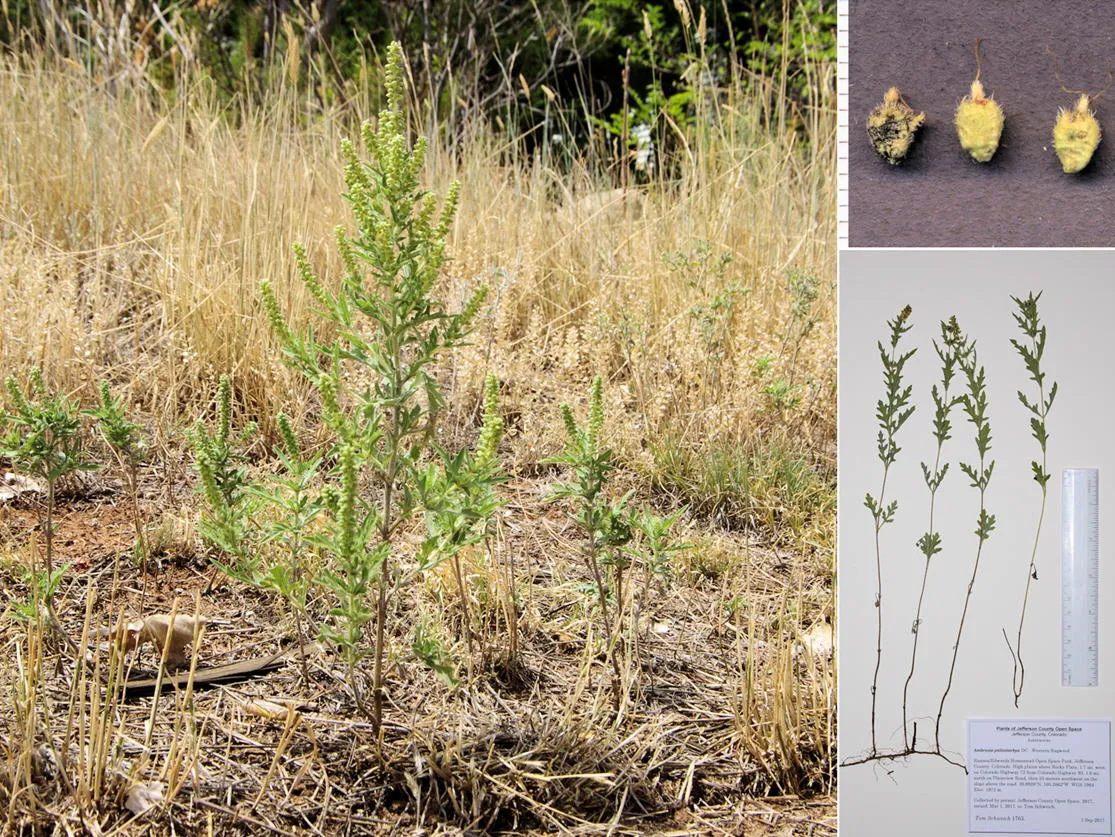By Tom Schweich
In full bloom this week along Golden’s trails and in open spaces this week is the much-maligned “Western Ragweed” — Ambrosia psilostachya DC. This plant is found in nearly every state of the Union, except perhaps Ohio and West Virginia, but is most common across the prairie from Kansas City west to the Front Range of Colorado.
Western ragweed (Ambrosia psilostachya DC.) is often disliked for several reasons. It is very allergenic, producing large amounts of a light-weight pollen containing a protein (adenosine) that our immune system reacts to, even though it is one of the four building blocks of DNA and essential for all life. Western ragweed can also be invasive and difficult to control, having a negative impact on agriculture. Finally, its rough, scraggly appearance doesn’t match our aesthetic ideas of a well-manicured landscape.
On the other hand, western ragweed plays a significant ecological role. It is a food source for wildlife and its seeds are particularly favored by species like quail, doves, and sparrows. It provides habitat and shelter for insects and small mammals, and the extensive root system can stabilize the soil, reducing erosion.
Our plant was described by Agustus DeCandolle (1778-1841) from collections made in Mexico by Jean-Louis Berlandier (1803-1851), who was a French-Mexican naturalist, physician, and anthropologist. Berlandier wrote that he found it between San Fernando and Matamoros in the Mexican state of Tamaulipas.
Both DeCandolle and Berlandier were interesting characters. DeCandolle was a Swiss botanist who introduced the word taxonomy and worked out a classification system based on the natural relations between plants. (Linnaeus’ classification of plants was entirely artificial.) Some of DeCandolle’s ideas about competition between plants influenced Charles Darwin’s thinking about evolution, as the two discussed their ideas over dinner in 1839 in Edinburgh, Scotland.
DeCandolle was also mentor to Berlandier and suggested that he travel to Mexico. In Mexico, which included Texas at the time (and I’m OK with giving it back), Berlandier studied geography, plants, and anthropology, accompanying Comanche leaders on a bear and bison hunt northwest of San Antonio. Because of his familiarity with the geography of Texas, Berlandier served as a captain and cartographer in Mexico's Army of the North during the Mexican-American War of 1846-1848.
Several plants are named for Berlandier. Most Colorado gardeners are familiar with “Chocolate Flower” or Berlandiera lyrata Benth., an excellent garden addition that is native to the dry rocky limestone plains of southeastern Colorado, but not native to Golden.









